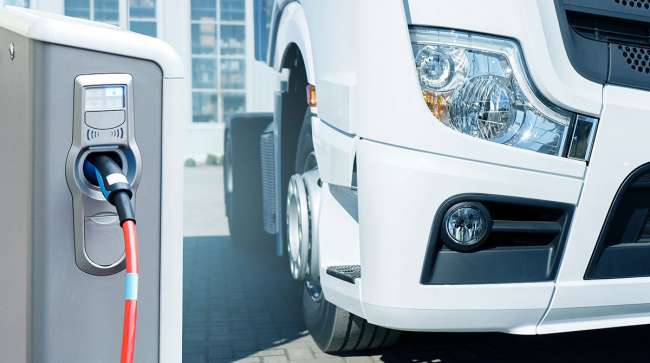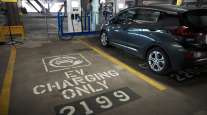Senior Reporter
Trade Groups Comment on Plan for 500,000 EV Charging Stations

[Stay on top of transportation news: Get TTNews in your inbox.]
In public comments, nearly 500 trade groups and individuals shared with federal regulators ideas and concerns about how to proceed with the Biden administration’s plan to oversee the build-out of 500,000 electronic vehicle charging stations by the end of the decade.
A sampling of the comments, made in response to a Nov. 29 Federal Register request for information by the Federal Highway Administration, were generally supportive but also candid in outlining considerations that should be addressed.
The recently enacted bipartisan infrastructure law is providing funding for the deployment of electric vehicle charging infrastructure.
FHWA EV Charging by Transport Topics
“American Trucking Associations cannot stress enough that the trucking sector needs equal footing with the light-duty transportation sector,” the trade organization wrote in its comments. “Too many times the use of the term EV trucks refers to pickup trucks, not the trucking industry that moves over 70% of the nation’s freight tonnage every year.”
ATA added, “Infrastructure build-out for the freight sector on the federal highway system should ensure adequate distancing between charging locations driven by data, electric vehicle sales, fleet deployments and market projections. As more heavy-duty vehicle models become market-ready and sold over the next several years and as EV range improves, the most logical siting for charging locations for longer-haul freight trucks should be at existing truck fueling locations.”
The federation also noted that fast charging is critical in the freight sector, given the amount of time needed to repower truck batteries.
Natso, which represents truck stop owners and operators, said charging stations should be located where drivers already go.
“EV charging availability at existing fuel retailing locations would mean drivers do not need to change their habits if they choose not to — they can refuel on-the-go at the same convenient locations that they do today,” wrote Natso. “The availability of fast-charging capacity and pricing on large price signs at fuel retailers’ locations throughout the country is the most effective way to relieve EV range anxiety.”
Today, the Biden-Harris Administration released an Electric Vehicle Charging Action Plan to outline steps federal agencies are taking to support developing and deploying chargers in American communities across the country.https://t.co/p3bKTykWuJ — The White House (@WhiteHouse) December 13, 2021
Yet, Natso noted that fuel retailers will face “headwinds” in building out charging units.
“Foremost among these headwinds is the potential that private businesses that must raise capital entirely at risk may find themselves forced to compete on an un-level playing field, where utilities that rely on ratepayer-supported funding are also providing EV charging services,” Natso said.
The Pennsylvania Department of Transportation urged including but also looking beyond existing fueling infrastructure.
“Funding should provide opportunities to add EV infrastructure at current fueling stations but also give consideration to charging at nontraditional ‘gas station’ models, including hotels, grocery stores, malls, airports, transit stations, parks, libraries, and schools and universities,” it wrote. The Texas Department of Transportation, meanwhile, urged that DOT, “should make it clear that public-private partnerships are allowed.”
“We encourage the department to prioritize charging for commercial fleets,” wrote environmental group Earthjustice. “There should be a focus on public-facing charging in diesel freight hubs (e.g., ports, railyards and airports) to hasten the deployment of zero-emissions trucks to these diesel magnets.”
Want more news? Listen to today's daily briefing above or go here for more info
The American Association of State Highway and Transportation Officials warned that broader infrastructure challenges may come up. “These obstacles include: the capacity of the electrical grid and its proximity to potential charging stations, especially in rural and underserved areas; industry capacity to meet the sudden increase in demand for EV supply equipment; and coordination, on a huge scale, with nontraditional stakeholders that have existing business models and supply chains,” AASHTO said.
NESCAUM, a regional association of air pollution control agencies in eight Northeastern states, advised clearing away administrative hurdles.
“Streamlining the permitting of fast-charging stations is an important issue that needs to be resolved to enable the rapid deployment of fast-charging networks,” the group said. “According to electric vehicle supply equipment providers, the local permitting process for fast-charging stations is sometimes lengthy and fraught with delays due to unfamiliarity with the technology, protracted zoning reviews, and undefined requirements for permitting.”




